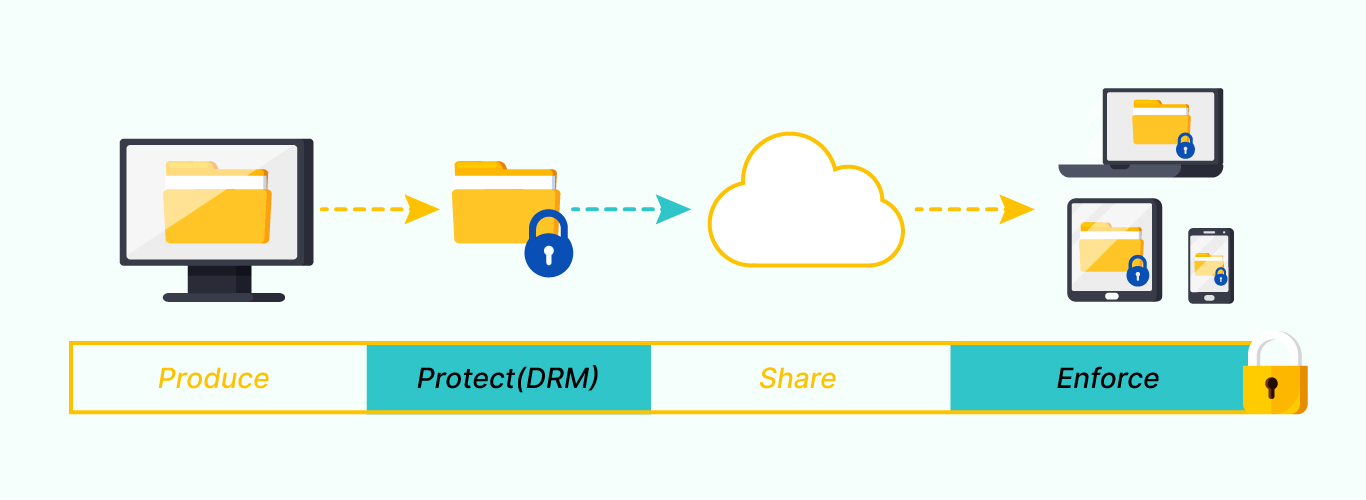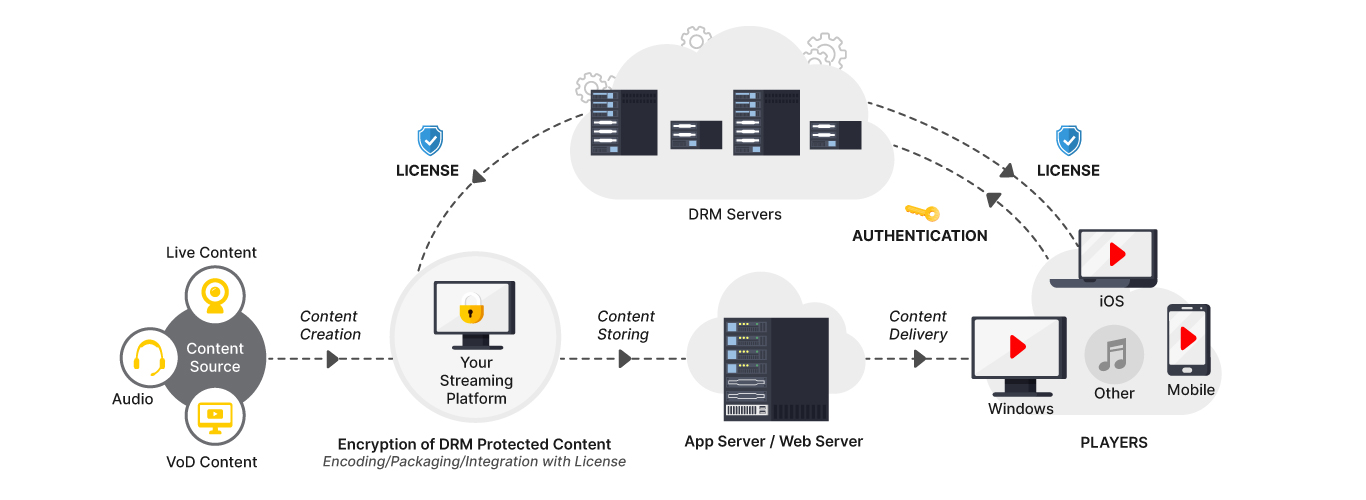We provide various tools or technological protection measures such as access control technologies to restrict the use of proprietary hardware and copyrighted works.

Digital Rights Management is a set of hardware and software technologies designed to control how we use, edit, and share content/information assets online or offline. DRM is also called technological protection measures (TPM), as it intends to protect the copyright for technology-enabled content.
You can implement DRM for:
If your company is creating, delivering, and distributing content online, they need to be that they have the necessary protection in place.
This is among the oldest types of DRM. The user can view or consume the content from the primary channel (streaming platform, DVD, website, etc.) but cannot make a copy. An online publisher could enforce DRM on its website to prevent plagiarism.
This is similar to copy prevention, but the user is allowed to make a certain number of copies in certain conditions. For instance, you might be allowed up to three copies of an eBook, but not for commercial purposes.
This is a simple but highly effective DRM technique, where the user must know a unique password to access a document. This type of DRM is frequently used by financial services providers to keep consumer transactions safe.
This is a free Digital Rights Management technique that prevents users from reusing visual content as their own. Watermarks are regularly used for stock photographs, GIFs, and videos, enabling users to pursue content libraries without using them for commercial purposes.
This advanced technology prevents users from opening a file unless they are on an approved device. Enterprise DRM relies heavily on device-based control, as does certain OTT media. For example, device manufacturers must obtain DRM certification from Netflix.
DRM confirms that video content is encrypted and packaged properly during the storage and transmittal processes, the main goal here is to ensure that only authorized devices and users can play the video back. When the necessary DRM schemes are in place, the video player will only decrypt the content if it determines the device and user have the proper authorization.

In a nutshell, DRM ensures that video content is stored and transmitted in an encrypted form so that only authorized users and devices can play it back, as depicted above.
Digital rights management solutions provide the ability to share data/files but still retain control over who can access and what they can do. Secure file collaboration and the need to share files with sensitive information with 3rd parties is a necessity for companies of any size, in any industry. DRM’s benefits include: